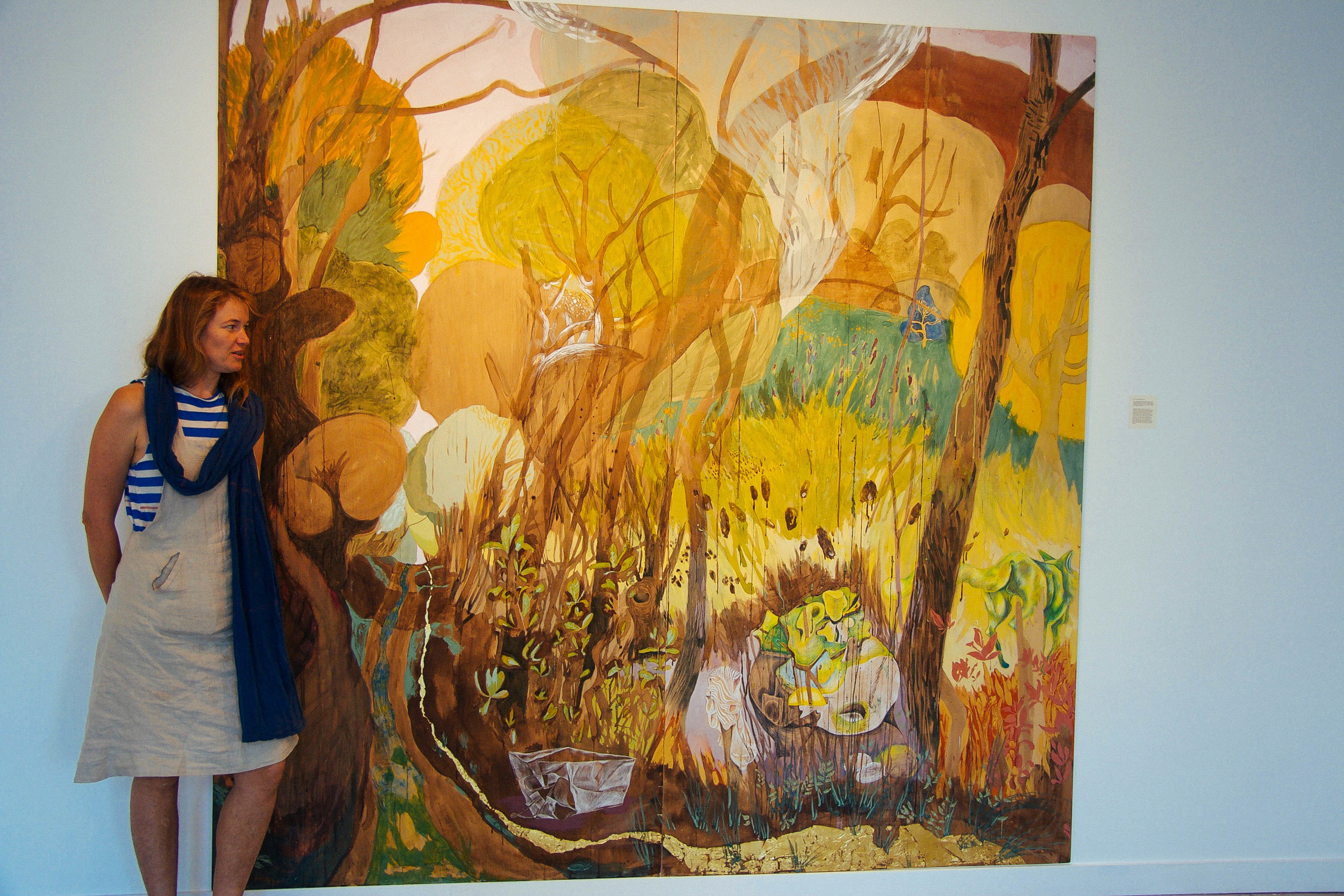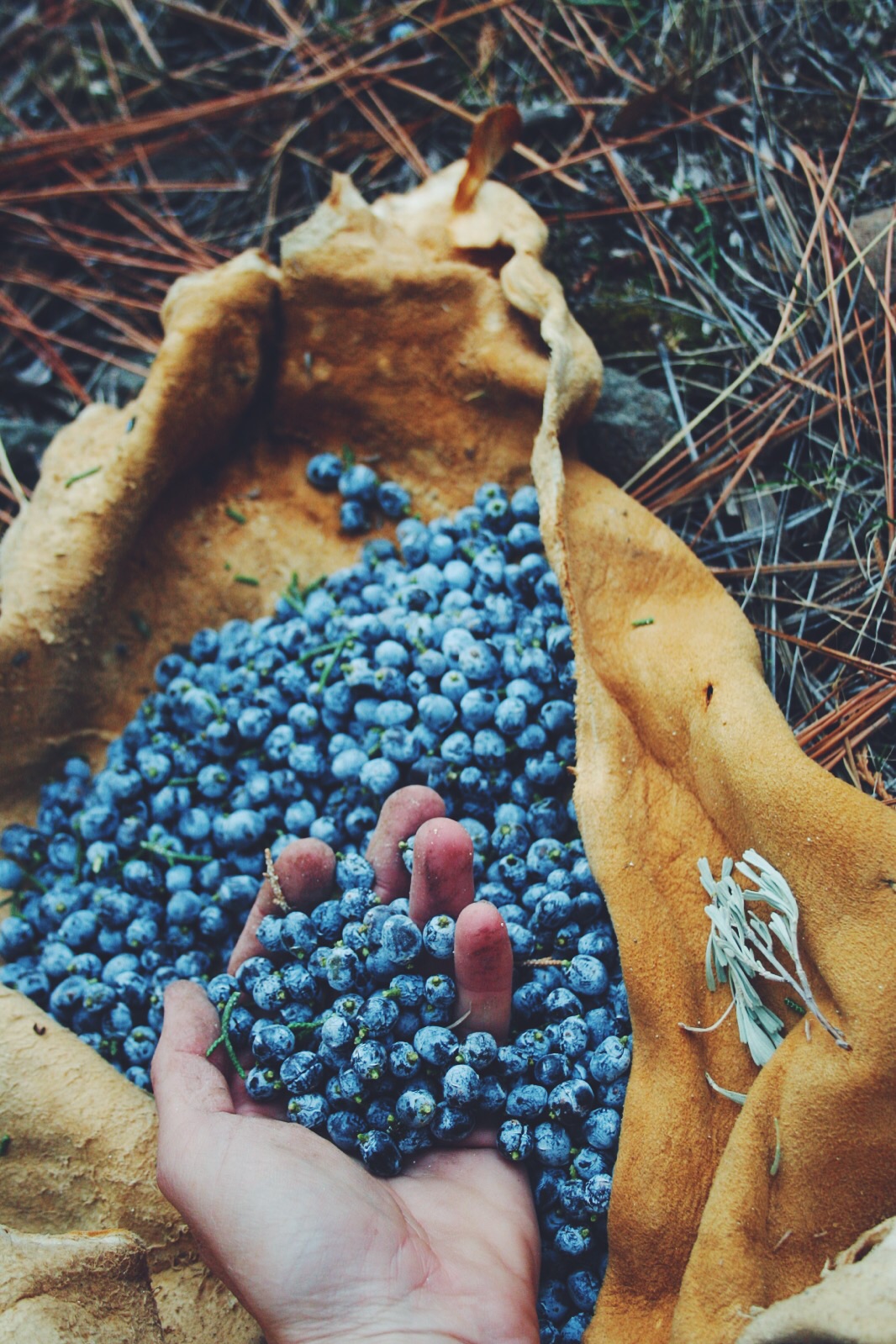I can’t help but react with curiosity to the ways in which artist Tilke Elkins explores the blurry line between what we deem ‘natural’ and ‘un-natural’ through her visual artwork.
In her work, she uses color, story, material investigation, texture and play to give the viewer an opportunity to dive into that blurry line headfirst and not necessarily with the intent to provide definitive answers through that process. Deciding what is natural is not the goal. But, if inviting us to take a second (or third or fourth) look at a ‘thing’ and how we see it and ourselves as belonging or not is the goal, she is certainly succeeding.
She often invites the viewer to look closer, to slow down, to touch and play and experience a thing by engaging it, not often the modus operandi in the art world, as work is often kept at a comfortable distance to be looked ‘onto.’
This exploration of ‘natural,’ or the concept of ‘nature' where and what it is- is something I am also curious about. Just this morning, I was reminded of the power of words and story in all the ways we tell, re-tell or deconstruct stories, and the importance of considering this power in the current world we live in. I read Maria Popova’s weekly online newsletter Brain Pickings, of which she explores how philosophy is relevant to our lives. In this week’s edition, she quoted Rebecca Solnit’s writings on the importance of telling stories, thinking about our words and what they mean in our lives based on how we accept or not accept who tells history. I quote Maria’s feature of Rebecca Solnit’s words in her book “Call Them by Their True Names: American Crises”:
There are stories beneath the stories and around the stories. The recent event on the surface is often merely the hood ornament on the mighty social engine that is a story driving the culture. We call those “dominant narratives” or “paradigms” or “memes” or “metaphors we live by” or “frameworks.” However we describe them, they are immensely powerful forces. And the dominant culture mostly goes about reinforcing the stories that are the pillars propping it up and that, too often, are also the bars of someone else’s cage. They are too often stories that should be broken, or are already broken and ruined and ruinous and way past their expiration date. They sit atop mountains of unexamined assumptions.
[…]
Part of the job of a great storyteller is to examine the stories that underlie the story you’re assigned, maybe to make them visible, and sometimes to break us free of them. Break the story. Breaking is a creative act as much as making, in this kind of writing.
Investigating what we deem ‘natural’ or ‘un-natural,’ however we do it, is worthy of this kind of critical storytelling.
I think that art is immensely important for also retelling stories, or for exploring how we use language, tapping into our primal reactions and innate knowings. After all, humans have been making art to tell stories, explore patterns or ideas as long as we have been humans, as seen in rock paintings and ceramics in Nevada and the Southwest U.S. or the Lascaux Cave paintings in France.
Our western capitalistic-driven patriarchal culture devalues art ultimately because art is a powerful tool for questioning our reality. Often stories stay stuck only representing one idea, or a skewed idea because it serves an oppressive goal.
Art plants seeds in our minds that don’t always have a rational or immediate kind of representative effect (since as a culture we are obsessed with instant gratification and ‘results,’ we choose not to notice the difference it makes), rather they leave impressions that ripple onwards, and outwards into the culture at large.
Just like investigating our world through writing, or oral story, visual story is also immensely important for influencing in our current world - whether through photography (a very new form of investigating) or visual art like Tilke’s paintings and sculpture. Making space for this kind of work in our world is incredibly important.
At the same time, the tools given to us to tell stories in a visual way are in the hands of everyone and can be used to reinforce the old narrative just as much as it can be used to question it. Even more reason to create, investigate and put forth.
I find myself resonating with Tilke’s investigation of color, texture, play and form through using natural and synthetic pigments because I too am interested in all the ways we tell stories through the materials we choose, the methods in which we tell things, and whose stories we find most compelling.
Of course, I also respond to color like others with varying forms of Synesthesia (including Tilke herself) with a kind of emotional-visceral reaction that is hard to describe with words. Tilke’s use of color creates pathways of connection in my brain, that again, have me re-imagining the world we live in.
Perhaps my use of different forms— writing, printing, painting, bookmaking, craft, and audio are all ways I am actively investigating how these tools we have available in our world can be used to highlight, communicate, deconstruct or display a different lens from which to see through. As someone reminded me lately, (resembling slightly one of many basic esoteric tenants found in Taoist and Sufi philosophy): displaying many sides of a crystal rather than just one show various ways light can shine, or the many faces of the sacred. Through this revealing, we have more information, more perspective on the state of things in our world, and from there we are driven to act with informed consideration.
I am also resonating with this quote of Rebecca Solnit’s writing as quoted by Maria Popova this week:
For journalists and for human beings generally, the elephant in the room has been there for a long time. It’s not even the elephant: the elephant in the room is the room itself, the biosphere in which all life currently known to exist in the universe is enclosed, and on which it all depends, the biosphere now devastated by climate change, with far more change to come. The scale is not like anything human beings have faced and journalists have reported on, except perhaps the threat of all-out nuclear war — and that was something that might happen, not something that is happening. Climate change is here, and it is changing everything. It is bigger than anything else, because it is everything, for the imaginable future.
[…]
Future generations are going to curse most of us for distracting ourselves with trivialities as the planet burned. Journalists are in a pivotal place when it comes to the possibilities and the responsibilities in this crisis. We, the makers and breakers of stories, are tremendously powerful.
So please, break the story.
With this I ask: who are the journalists, and what stories are we breaking? What needs to be broken and re-made? TO what urgency should we create, tell, and act?
Tilke and her Animal Village paintings, mentioned in our interview on the Ground Shots Podcast.
Tilke and her Animal Village paintings, mentioned in our interview on the Ground Shots Podcast.
I visited Tilke when she had a show at the Cascade Paragon Gallery on the Portland Community College campus in Portland, Oregon this past summer. I wanted to get some photos of her making her work in action, but because of my timing, and the preparations needed for her show, I ended up at the show itself and seeing how she ended up displaying what she had been working on in the time before and after our Wide Open Studios trip together with Signal Fire, last year.
You can listen to my conversation with Tilke on her work with natural pigments during my visit, here.
Patreon members will have access to a resource guide on natural pigments made by Tilke. To support The Ground Shots Project and Podcast, as well as have access to past and future guides like this one from Tilke, become a monthly supporter, here.
Tilke and her full sized initial Animal Village painting, as mentioned in our conversation on the Ground Shots Podcast.
closer up of the Animal Village Painting.
closer up of the Animal Village Painting
closer up of the Animal Village painting
closer up of the Animal Village painting



























































